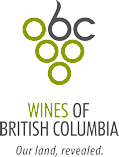Articles & Newsletters
Gamay Noir… understated & elegant
Thursday, December 1, 2022

It's that time of year again, when for decades we have awaited the annual cry on the 3rd Thursday of November... est arrivé!! est arrivé!! Beaujolais Nouveau Day was the brainchild of a rapidly dying growing area in France, one that needed a real boost, and it got it! Unfortunately for the region, and the grape variety, after the fairly long lived hype of this over yielded/produced wine style, it's global reputation began to decline. In spite of the decline of the Nouveau style though, there remained some serious Gamay producers in France that were committed to making serious wine, highlighting the delicate nuances that this lighter bodied grape variety has to offer… done right, producing the Cru and Village wines. And this is lucky for us here in the new world. With our cool climate growing area, some folks here believed in Gamay and it’s potential for serious wine, and today we boast some fantastic examples of it. As with France's top quality, high end Cru Beaujolais we make Gamay wines that range from a light, delicately floral elegant wine, to a more bold style with darker fruits like cassis, with violets and earthy notes. The constants of this grape variety are naturally low tannin levels and good acidity, so with the influence of the diverse terrors we boast throughout out winegrowing regions in BC, we are able to enjoy an equal level of diversity in the styles we produce.
Because of the lower tannin levels, and the desire to really bring forward and focus on the fruity aspects of the wine, a technique that was perfected in the Beaujolais region by Jules Chauvet, (a native vigneron renowned for purity in his terroir driven Gamay wines)… carbonic maceration, has been, and still is, often incorporated into the winemaking of this variety. A true carbonic maceration is achieved by fermenting whole clusters with all of the grapes carefully intact, usually in a closed, stainless steel tank. A blanket of Co2 is settled on top of the berries, and they gradually begin to ferment, within the berry, from the inside - out. As the fermentation progresses, the berries will burst, and continue to ferment creating the must until fermented dry, with next to no exposure to oxygen, preserving the maximum level of fruitiness possible. At times, a partial carbonic maceration is employed, and some wines go into inert barrels for a short time, while some wines go directly into bottle. This style is what we know in Europe as Beaujolais Nouveau. Our BC Gamay wines are often made with a partial carbonic maceration, followed by punching down of the cap, and often spend time in wood looking for a more serious outcome. We simply need to read the label to see what style the wine has been made in.
- Bright acidity
- Low tannin
- Low alcohol
- Fruit forward
- Medium bodied
- Cassis, Plums, Raspberries, Violets, Peony, Garrique
Your go-to red to serve with a charcuterie platter
We are lucky to have such breadth in our Gamay styles. Joie, on the Naramata Bench, makes a blend of Gamay and Pinot Noir called PTG - which is short for passe-tout-grains. A traditional French wine style (it has it’s own AOC) and term that means throw everything in! It’s what the locals would drink, as not many can afford a bottle of Burgundy with dinner every night! The PTG from Joie is a super example of this style of wine, again, lighter bodied, but with some depth of Pinot Noir, a little 5 spice, pie cherries, and a touch of forest floor.
I just love its expressive personality. It can be so elegant and floral, and really allows the soil type to show through in the wine. Volcanic soils and Gamay are probably my favourite, but granite is a very close second! - Jay Drysdale, Bella Wines
OCP makes a single varietal Gamay under the Haywire label. It's a certified organic, low intervention wine, partially whole bunch fermented with native yeasts, with a post fermentation maceration of 4 weeks, then into concrete to age for a further 8 months, ultimately revealing the true nuances and purity of the Gamay grapes. This wine brings more of the deeper darker sides of the grape variety, with the ever so present Okanagan garrigue we get from the plethora of aromatic scrub that grows in and around our vineyards in the south Okanagan. Bella Estate Vineyard makes a dry, crisp Méthode Ancestrale Rosé from Gamay Noir that has been exciting the Sommelier community both inside and out of Canada, and here at the BCwineinfocentre, aside from the afore mentioned producers, we also carry Gamays that range in style, from Dessert Hills, Lunessence, Indigenous World Winery, Orofino, Robin Ridge, Vin Amite, St. Hubertus & Wild Goose. Some of these Gamays are meant to drink now, or in the next year or so, and some are able to cellar for up to 10 years!
Because of the lower tannin levels, the bright acidity, and the fruit forwardness of Gamay, it is a super versatile wine in food pairing. Right off the top, if you are gathering, and have laid out a charcuterie platter, this is your go to wine. Chill it for about 15 minutes, and serve in larger bowled glasses. Pinot Noir glasses work well, as this is a very aromatic wine. It’s great with duck any way, roast chicken with orange and herbs, warmed brie with pomegranate sauce... I could go on!
Wishing you a fabulous holiday season, from our team at the BC Wine Information Centre, to you and yours!!
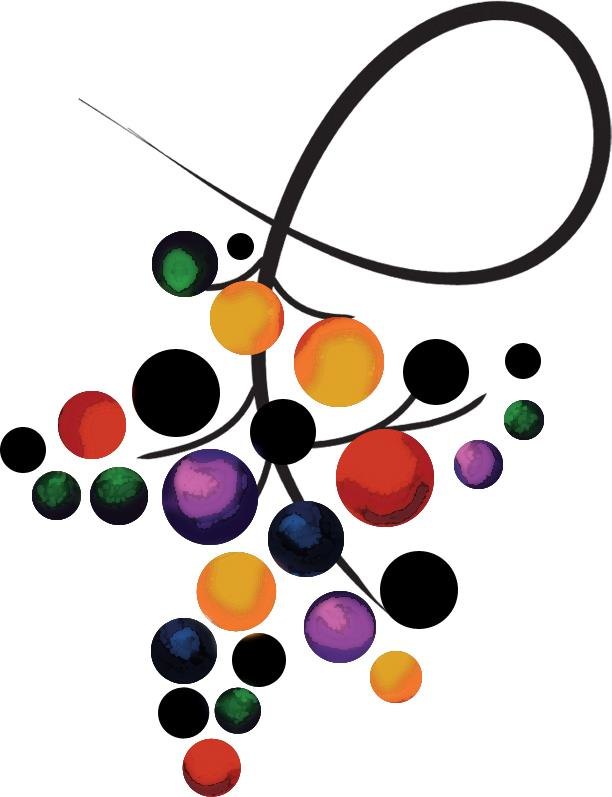 By Wendy Vallaster
By Wendy VallasterSpontaneous Fermentation with Ambient Yeast...
Tuesday, November 1, 2022

When you stick your nose deep into a freshly poured glass of wine, do you ever wonder if the aromas have already been determined?
Often when we think about terroir, we are focusing on the climate, soil types, aspect of the vineyard, elevation, etc… but one of the most important factors dictating a resulting wine is the human factor. Choices will have been made by the vigneron regarding whether a variety of herbicides, pesticides, fungicides have been applied to the grapes and vines, and how much... heavy use of these ‘cides’ can determine the health and existence of wild yeasts living in and around the vineyard, and directly on the grapes.
Upon picking, the vigneron then chooses whether to heavily sulphur the grapes to terminate any living yeasts that might interfere with the cultivated yeast they choose to inoculate their must with… one that will determine the development of particular nuances on the nose… particular fruit notes, or mouth feel… or rather to lightly sulphur, and encourage the health and growth of these wild yeasts that often begin the fermentation process, some die off, then others that for instance, can withstand higher alc. content may take over, and so on… each imparting their own particular nuances in the nose and the body of the finished wine, contributing to it’s complexity. This cycle continues, and it’s likely that as wild yeasts grow and die, the existing ambient yeast in the winery will likely take over and complete the fermentation. It can be a risky technique, as we all know, those precious musts can be costly to create, but with a super clean winery and equipment, close monitoring, and some temperature control, one can create a truly terroir driven wine. One that is representative of all of the factors mentioned earlier, plus the biological life in the vineyard and air. Risky business for sure, but when done well, can result in some outstanding wines.
 By Wendy Vallaster
By Wendy VallasterSpontaneous fermentation in BC Chardonnay
Yeast Strain Development
Browning of the Must
Dwight Sick on Cultured Yeasts
Dwight Sick on the Spontaneous Fermentation
Pét-Nat! | Pétillant-Naturel | Méthode Ancestrale
Tuesday, September 20, 2022
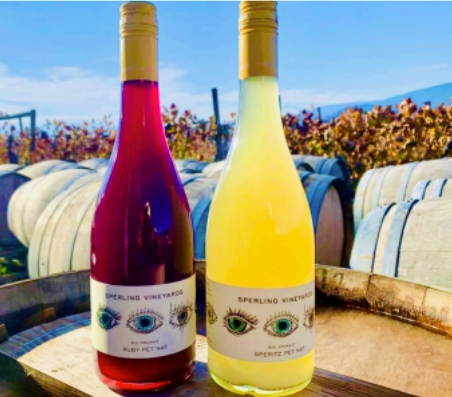
The French term Pétillant Natural refers to soft bubbles that have been naturally created.
...or as we would call it in English: Ancestral Method. Indeed, this is the oldest known method of sparkling wine making. The idea, is to bottle partially fermented red, white or rosé wine and leave it continue to ferment in the bottle. Some gas will be formed in the bottle as a by-product of the alcoholic fermentation... not quite as much as in the traditional method where one is adding yeast and sugar to an already fermented dry wine creating 5 to 7 atmospheres of pressure (so, super bubbly). Most Pét-Nats are finished somewhere around the 2.5 to 3 atmosphere mark and are lightly bubbly, some retaining a little residual sugar as well, which if were the case would have a slightly lower alc./vol. level. A few degrees less than the wine would normally be if fermented totally dry, where the yeast will have devoured all of the sugar and made alc. of it : ) It is the tradition also, to neither filter nor disgorge a Pét-Nat, in which case a wine develops that will throw sediment, retained in the bottle of the finished wine. In serving it, you can choose to gently reincorporate it into the wine before opening (the crown/screw cap) or gently pour the wine off of the sediment. I recommend you serve it chilled to bring out the fun, fruity notes.
It is a wine style that focuses on a fresh, fruity profile. They are not meant to spend a long time with the spent yeast cells (where those toasty, nutty, brioche notes come from in an aged on the lees, traditional method wine). Try them with a cheese and charcuterie plate, throw on a little fresh fruit, nuts, and you’ll see how well the Pét-Nats compliment it all. There are a few BC Pét-Nats kicking around the wine scene here... seek them out and give them a try!! It might be just what you’ve been looking for.
 By Wendy Vallaster
By Wendy VallasterBC Authorises 6 New Subregions!
Monday, August 15, 2022
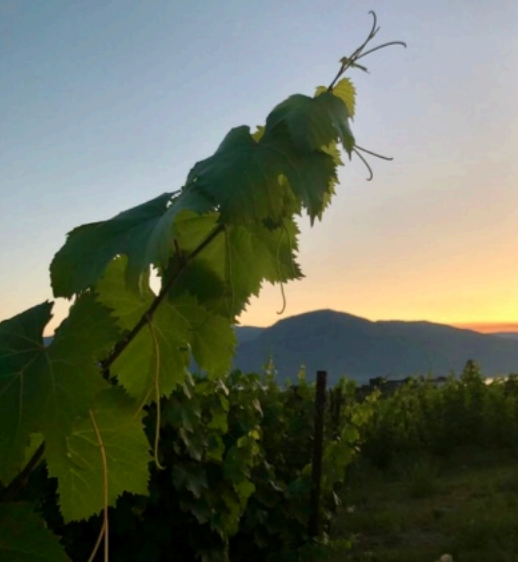
- East Kelowna Slopes
- South Kelowna Slopes
- Lake Country
- Summerland Valleys
- Summerland Bench
- Summerland Lakefront
Well, aren't we growing up?!! With 6 new subregions recently announced, it brings the total up to eleven in the Okanagan alone, and an additional subregion within the Vancouver Island GI. To break it down a bit, our 9 GI’s or Geographic Indications are: FRASER VALLEY, GULF ISLANDS, KOOTNEYS, LILLOOET, OKANAGAN VALLEY (including the 11 subregions of East Kelowna Slopes, golden Mile Bench, Golden Mile Slopes, Lake Country, Okanagan Falls, Naramata Bench, Skaha Bench, South Kelowna Slopes, Summerland Bench, Summerland Lakefront, and Summerland Valleys), SHUSWAPS, SIMILKAMEEN VALLEY, THOMPSON VALLEY, AND VANCOUVER ISLAND (including the Cowichan Valley subregion).
We can note that GI’s on the wine label note where the grapes are grown, (95% must come from the GI or sub GI names) not necessarily where the winery is located. The whole idea behind creating these GI’s is to inform the consumer of the origin of the wine. From there, we can begin to delve into the broader sense of place via a general Geographical area, and further, investigate the climate, soil types, altitudes, etc. that a subregion might have that can be notes in the nature of the wines that come from them. These are wines that we may call ‘terroir driven’. They represent these particular aspects of a notable growing area with specific geographical and topographical characteristics. We can expect, for instance, the wines that are created from more northern sourced vineyards in say the THOMPSON GI to have a brighter, more acidic profile. This is due to the way that grapes develop in cooler climates, with less sunlight hours, and cooler nights. Wines derived from the vineyards in the OKANAGAN GI, and particularly the GOLDEN MILE sub GI that practically hug the Canada USA border can be expected to display lush, deeply coloured red wines with a firm structure for which to wrap the layers of seductive well ripened fruit profiles, with tannin structure that is firm, but not astringent. The grapes this far south enjoy plenty of heat, and sunlight hours so the phenolic components that lay just beneath the skins of the grapes develop nicely. This is where the colour pigments develop, esters that we can interpret via the aromatic profile, and tannins that in a fully ripened grape, show smooth but firm in the finished wine. It’s why we grow many of the Bordeaux grape varieties as far south as possible.
As we move northward into the subregions of OKANAGAN FALLS and the NARAMATA BENCH we can notice that Pinot Noir vineyards are very healthy, seeming to thrive in the terroir there, and producing gorgeous, terroir driven wine. Heading east into the KOOTNAYS GI with fewer sunlight hours and heat degree days, we can again feel the cooler climate aspect in the nature of the wines coming from this area… they are a little lighter, fresher, and with delicate aromatic profiles. Moving through the SIMILKAMEEN VALLEY GI when we taste the wines we can feel that the wines are subject to cool evening winds, so although they get some fantastic sunlight hours, and heat during the day, they also develop freshness that comes from the high mountains on each side of the valley creating an early sunset, and from the chilly winds that blow through the valley.
VANCOUVER ISLAND GI covers a fairly diverse set of growing conditions with much higher rainfall than we experience further inland… here we are able to find grapes that make fruit forward sparkling wine, fresh summer sippers, and as the area matures we are finding some well made reds as well. Hybrid grapes have been key to the development of the growing area as there are many that have been developed that are resistant to the fungal diseases that might cause havoc in the more humid environment of the west coast. In the COWICHAN VALLEY sub GI white German grape varieties do very well, as well as Gamay Noir and some of the PInot’s. Wines with tension… creating the notoriety needed to become a unique Vancouver Island subregion. The GULF ISLANDS GI produce a fairly small quantity of wine, but have their own unique growing conditions too. Many of the Gulf Islands have a dry climate and exist on bedrock with very little topsoil and a good amount of sunlight hours as you move further south.
Our new 6 sub GI’s highlight some of BC’s more recent producers and will bring recognition to the wines coming from these uniquely specific wine growing areas. As these wine projects and regions grow and mature in their own right, we as consumers will have a front seat to the development of wine style and craftsmanship in the making of the wines that hail from them. One of the wonderful things about existing in a new and developing winegrowing area of the planet, is that we have SO MUCH ROOM TO LEARN AND GROW!! We are now beginning to see what grape varieties do well in each particular terroir and that’s an accomplishment! Let’s sit back with a glass of BC wine in hand, and enjoy the journey ;)
 By Wendy Vallaster
By Wendy VallasterMonday, August 1, 2022
Vineyard Ground Crop Cover
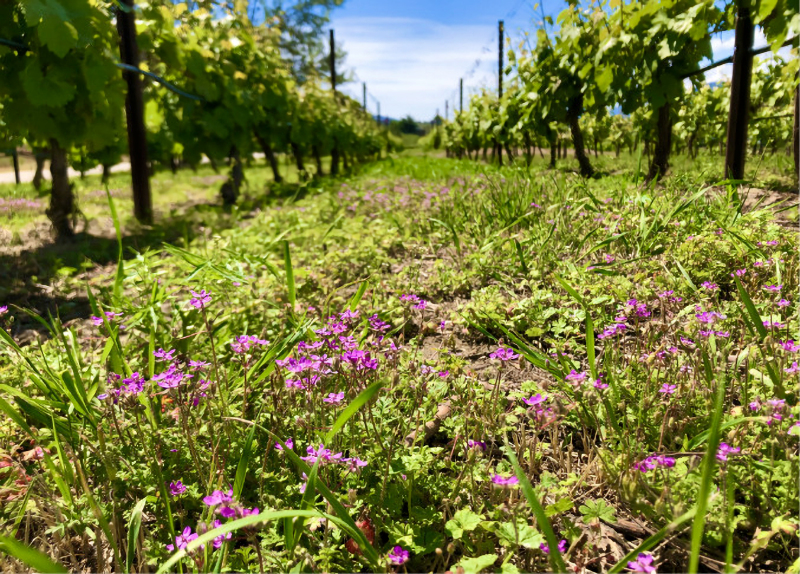
Storks Bill which can create a lovely carpet of tiny purply-pink flowers early spring is one of the commonly planted vineyard cover herbs here in our Okanagan vineyards.
As our BC wineries and viticulturists find workable solutions to the effects of climatechange, we are beginning to see a much wider use of cover crops in our vineyards. Vineyard cover crops can contribute immensely to the health of the soil, including water retention, contributing to drought resilience by increasing soil organic matter (over time), increased water infiltration and water holding capacity. Additionally they can deposit and set additional nutrients into the soil while assisting in nutrient cycling. For instance, clover and other legumes can set much needed nitrogen into the soil, which the vines can later make use of. Soil erosion is also reduced with the use of cover crops and with many of our Okanagan vineyards planted firmly in an ever so delicate silty, loamy, bench land soil... a type that drifts away with the lightest disturbance, it is a good thing!
Flowering cover crops can attract beneficial parasitic insects that prey on vineyard pests. By increasing their habitat we can draw them into the vineyard as well as attract vertebrates that can assist in rodent population in and around the vineyards (another pesky Okanagan issue). With the advent of chemical pesticides, unfortunately, the benefit of pest control with natural parasitic insects has long since been forgotten. There are some very interesting ongoing studies that link the conservation of natural habitat with reduces pest problems in winegrowing areas. Hopefully soon we will see the use of inter-vine mulching as an alternative to spraying glyphosate which we are now finding can reduce cold hardiness in some vine species and cause issues that have long been attributed to frost damage, like trunk die back due to trunk splitting. Perhaps the world could use a little less of it. New tractor attachments called finger weeders that go in and around the vines sort of grubbing up all the weeds, are a great alternative. David and Cynthia Enns, of 1Mill Rd have one in use now, and I am certain we will see more of them in use. Step by step, our growers continue to rise to the occasion!
 By Wendy Vallaster
By Wendy Vallaster